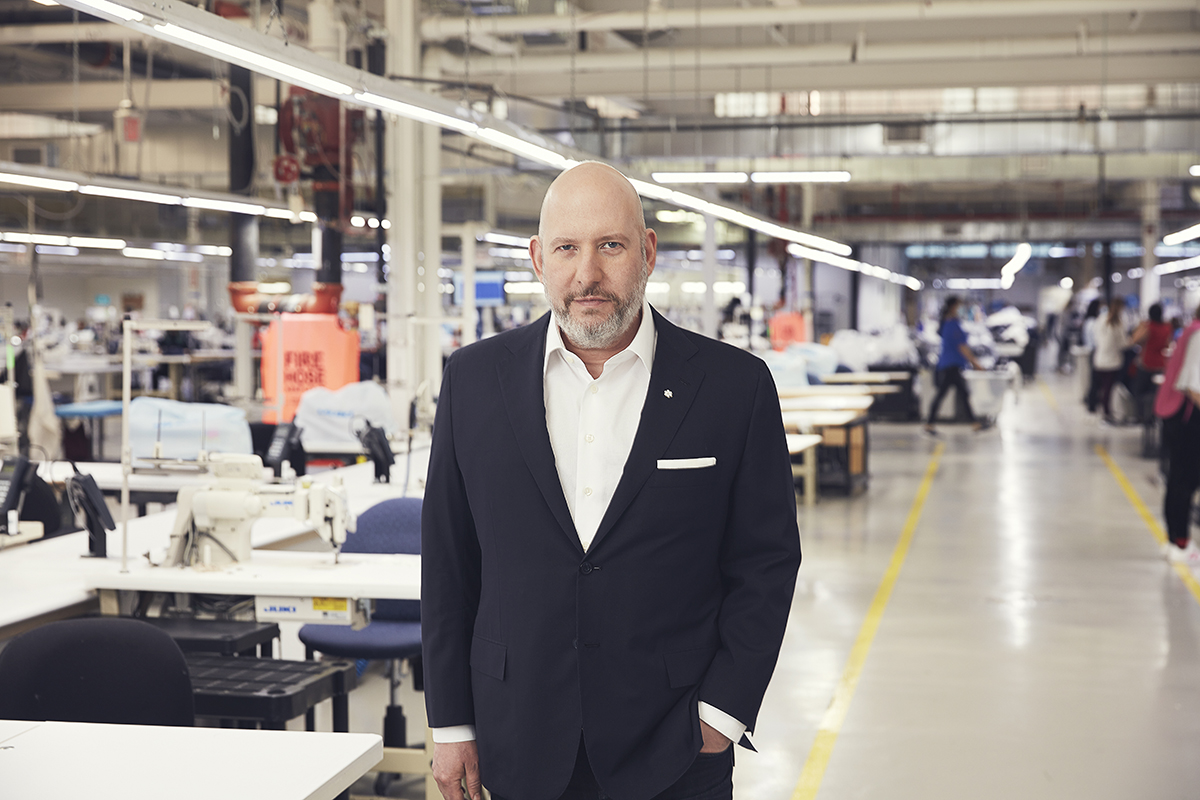
Dani Reiss, Canada Goose CEO
Heritage, authenticity, design pedigree, celebrity – Canada Goose has all the elements of a fashion success story. So how did a family brand that made functional fur-trimmed down parkas for the local police become the multimillion-dollar powerhouse it is today? We talk to CEO Dani Reiss on the rise of outerwear.
In fashion, a lot changes in 25 years. Dani Reiss, the CEO of Canada Goose, began working at the brand – originally owned by his parents – in 1997. At the time, the company’s famous down jackets were worn by those who worked out in the cold: members of the Ontario police force, film crews and actors on set, and Canada Goose was part of a successful family business bringing in $3m in revenue a year. Fast-forward a quarter decade and things are a little different. In 2017 there was a $391m IPO. And in 2021 Canada Goose reported revenue of $186.69m, in the second quarter alone. This turnaround is perhaps thanks to an unlikely style success story – that of Canada Goose’s down jackets, with their trademark red and white logo on the left-hand sleeve. These jackets are now worn – on and off film sets, crucially – by Emma Stone, Daniel Radcliffe, Angelina Jolie, Daniel Craig and Rihanna. They’re also bestsellers in the outerwear category at retailers such as Flannels and Net-A-Porter, and the global shopping platform Lyst saw searches for Canada Goose go up 71 per cent year-on-year in December 2021.
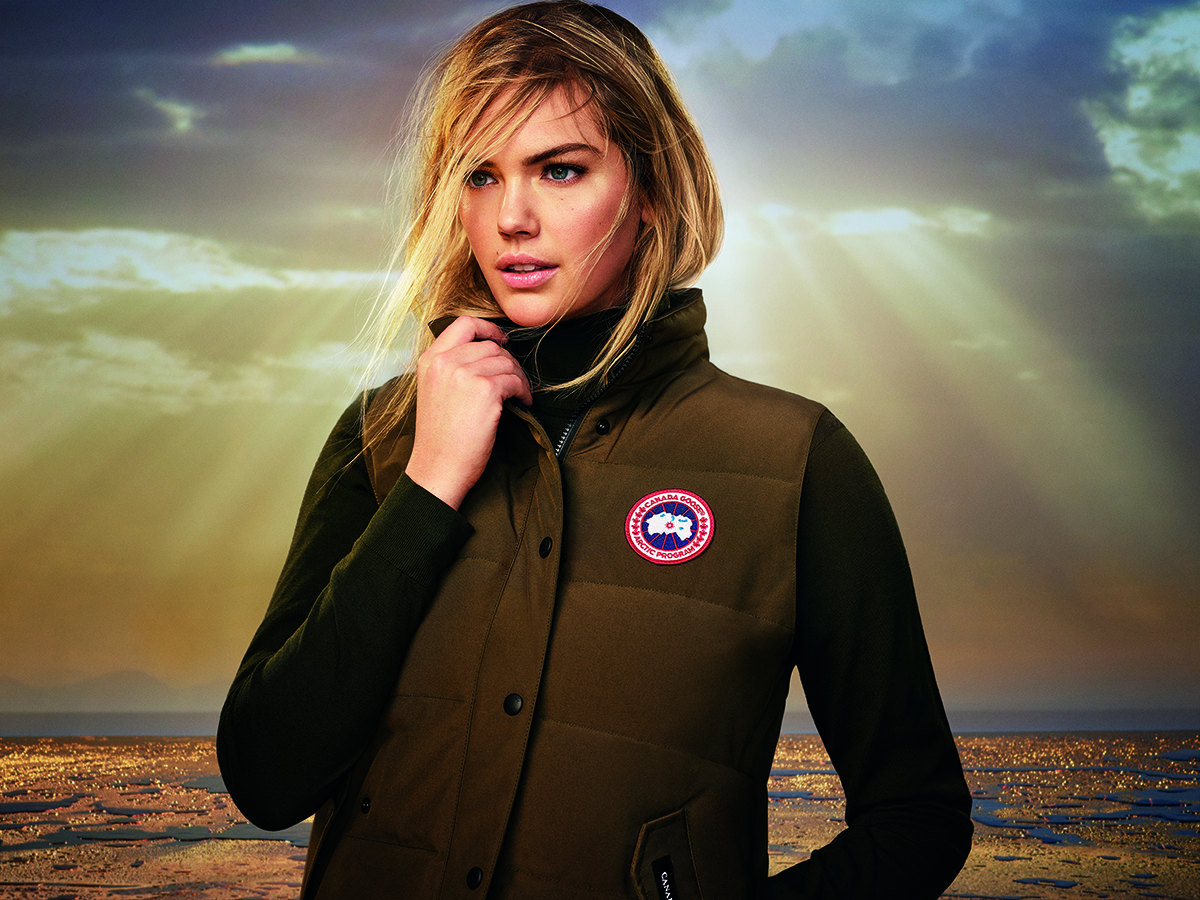
Campaign star Kate Upton in an SS20 look
Speaking to LUX recently, Reiss is candid that this wasn’t an overnight change. The marketing budget was non-existent when he took over and the team worked hard to create an organic buzz around the brand. “One thing we did have at the time was a relationship with the film industry,” he says. “And so, we used them as role models and made sure our products appeared on screen like in National Treasure, where people were out in extreme climates.” Reiss surmised – correctly, as it turned out – that this authentically rugged association would appeal to urbanites. The real success came when these customers invested in the jackets – and found them to live up to the hype. “Ultimately it comes down to having an amazing product,” he says. “They thought they were warm because they bought a similar jacket, but they weren’t actually warm. That’s where the urban legend came to be, where people say, ‘All you need to wear is a T-shirt under a Canada Goose jacket’, which is actually true.” Canada Goose has grown in stature through its association with the cold, and Canada – a place where the weather system can plummet to -30C (-22F) – is part of that.
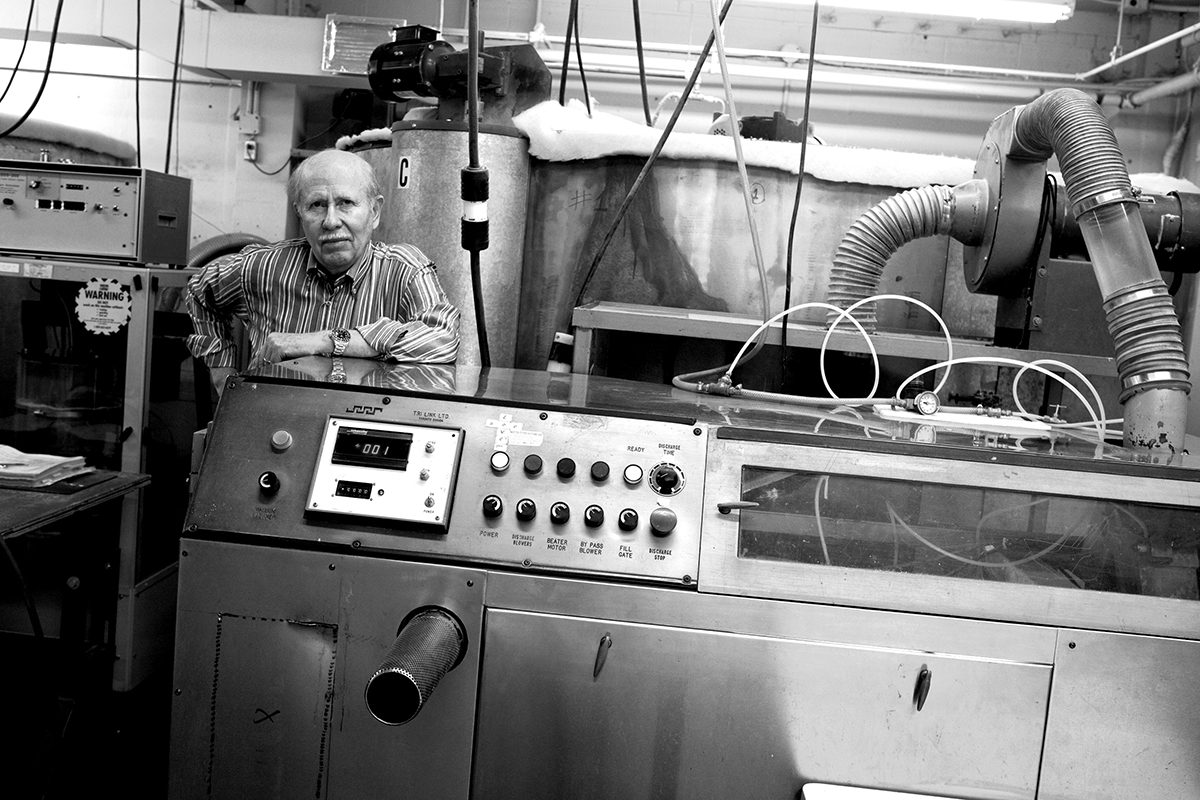
Dani Reiss took over the family business from his father, David, pictured above, in 1970
‘Made in Canada’ has long been part of Reiss’ strategy. The brand has the largest supply chain in the country and employs 20 per cent of Canada’s apparel workforce. He describes the ‘Made in Canada’ label as “a huge differentiator for us. Like a Swiss watch made in Switzerland, you see the word Swiss before you see the word watch and so you can’t separate the two.” As a young man, Reiss was resistant to joining the family business. Studying English literature and philosophy at the University of Toronto, he initially made an exception to earn some money to go travelling. While at the company, he says, he realised the power of this brand he had grown up with. “What I learnt was that people loved our products,” he says. It was this connection between customer and product – a story, in a way – that made the aspiring writer change his mind and, indeed, excel at his job. He was CEO four years after joining, at the age of 27. A balance of fashion nous and product-led authenticity form the narrative that has helped Canada Goose become the success story it is today.

A glimpse inside the Canada Goose factory in Toronto
Ben Hurren, head of men’s elevation at Flannels, sees the combination as essential. “Authenticity and craftsmanship undoubtedly remain key drivers for our customer,” he says. “But, more importantly, what really speaks to our customer is Canada Goose’s relevance in the world of high fashion and their ability to embrace modern trends; not just in the design process, but in their approach to marketing, too.”
Follow LUX on Instagram: luxthemagazine
Canada Goose – with its 60-odd-year history – has the heritage and design pedigree to back up any modern marketing. “I think that today, more than ever, people want authenticity, they don’t want fake brands,” says Reiss. “Brands with heritage and history that have a reputation behind them – I think that’s important.” But he’s aware fashion is part of the story, too. “If you look back 20 years ago… you bought a jacket, you wore it in the snow, you didn’t pick it when you went to pick your outfit, the way you would pick your shirt and your shoes or your blazer,” says Reiss. “Outerwear has now become a category.” The brand is exploring categories, too, adding knitwear in 2017. In its Fiscal 2022, the brand saw its non-parka revenue grow by more than 70% – driven in large part by lightweight down, vests and apparel.
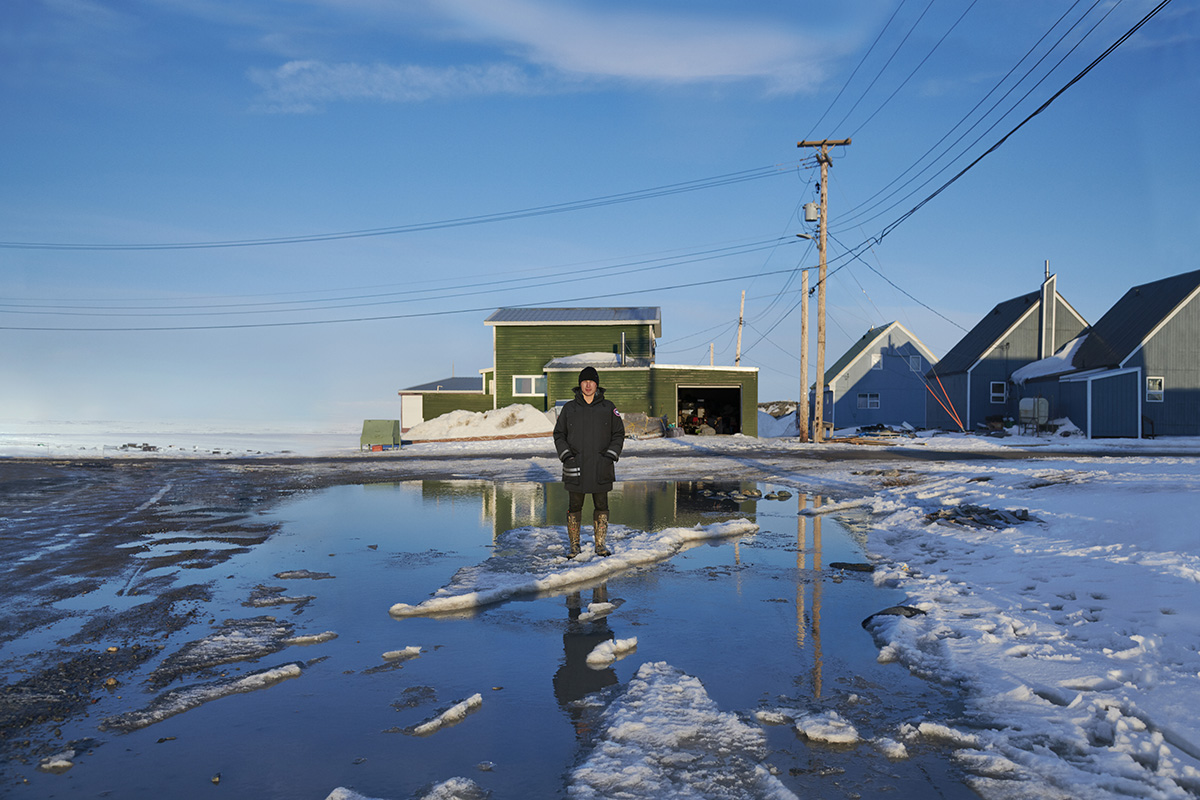
Jordin Tootoo in the FW19 Campaign
Next is footwear. The brand bought the outdoor shoe company Baffin for $32.5m in 2018, and launched Canada Goose footwear at the end of 2021. The CEO is keen to keep the company relevant moving into a new era, with a new generation. The campaign for the footwear range is a case in point – it features indigenous Canadian activist Sarain Fox, the hockey star Jordin Tootoo and Romeo Beckham. “They have to be a Goose Person; they have to be authentic,” says Reiss. “All of our brand ambassadors use our products in the field, and they are all authentic people with authentic stories.”
Read more: Frieze pays tribute to New York’s cultural ethos
Beckham is described as “a compelling addition, and he also does resonate with a younger demographic.” Pierre Lavenir, a cultural specialist at Lyst, says alliances like these have helped the brand’s success. “Teaming up with relevant community stakeholders can also help Canada Goose reach a greater audience,” he comments. “We can expect the brand to strengthen its partnerships with outdoor enthusiasts – such as explorer Aldo Kane – and to team up with more streetwear brands to earn its place in the zeitgeist.”
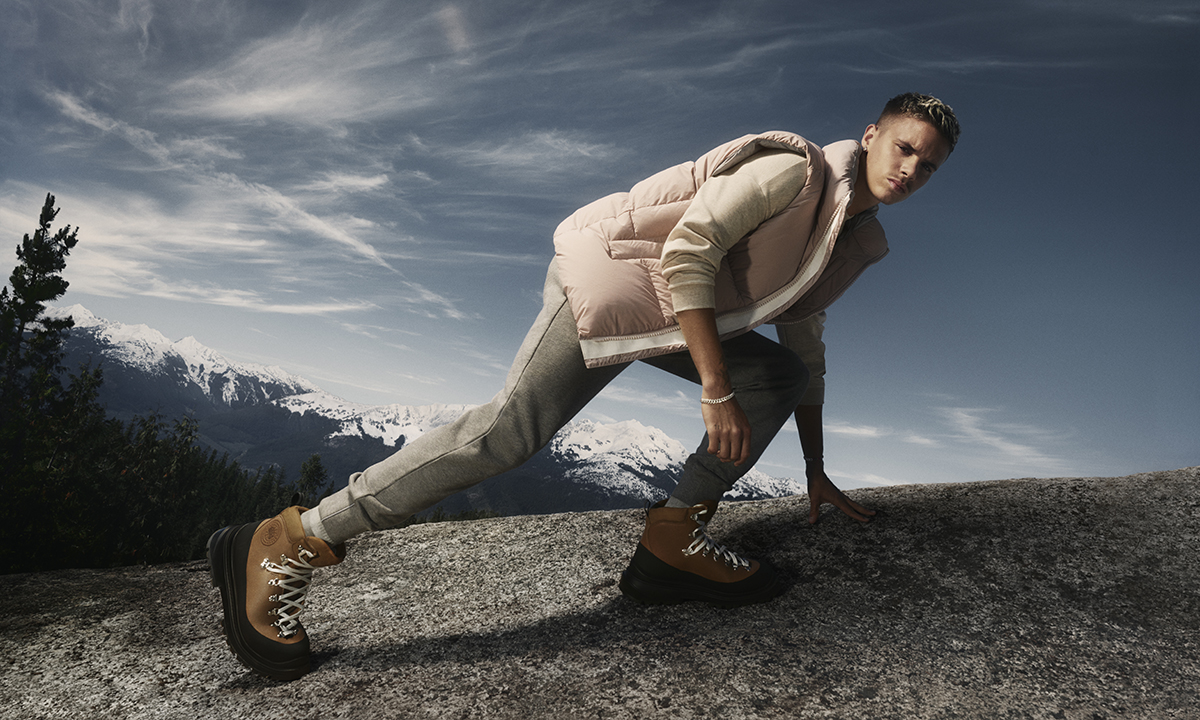
Campaign star Romeo Beckham modelling the brand’s first ever footwear offering
Canada Goose’s relevance to a new generation goes beyond campaigns, to how the company is run. The longtime use of fur on the hoods of parkas was problematic – particularly for Gen Z and millennials, demographics with sizeable vegan cohorts. In June last year, Canada Goose announced that it would be going fur-free, and cease manufacturing with fur by the end of 2022. The focus has instead moved to a more sustainable way of working: the brand launched the Standard Expedition Parka in 2020, which is made using 30 per cent less energy than any other Canada Goose product, and recycled nylon is part of the Cyprus and Crofton collections.
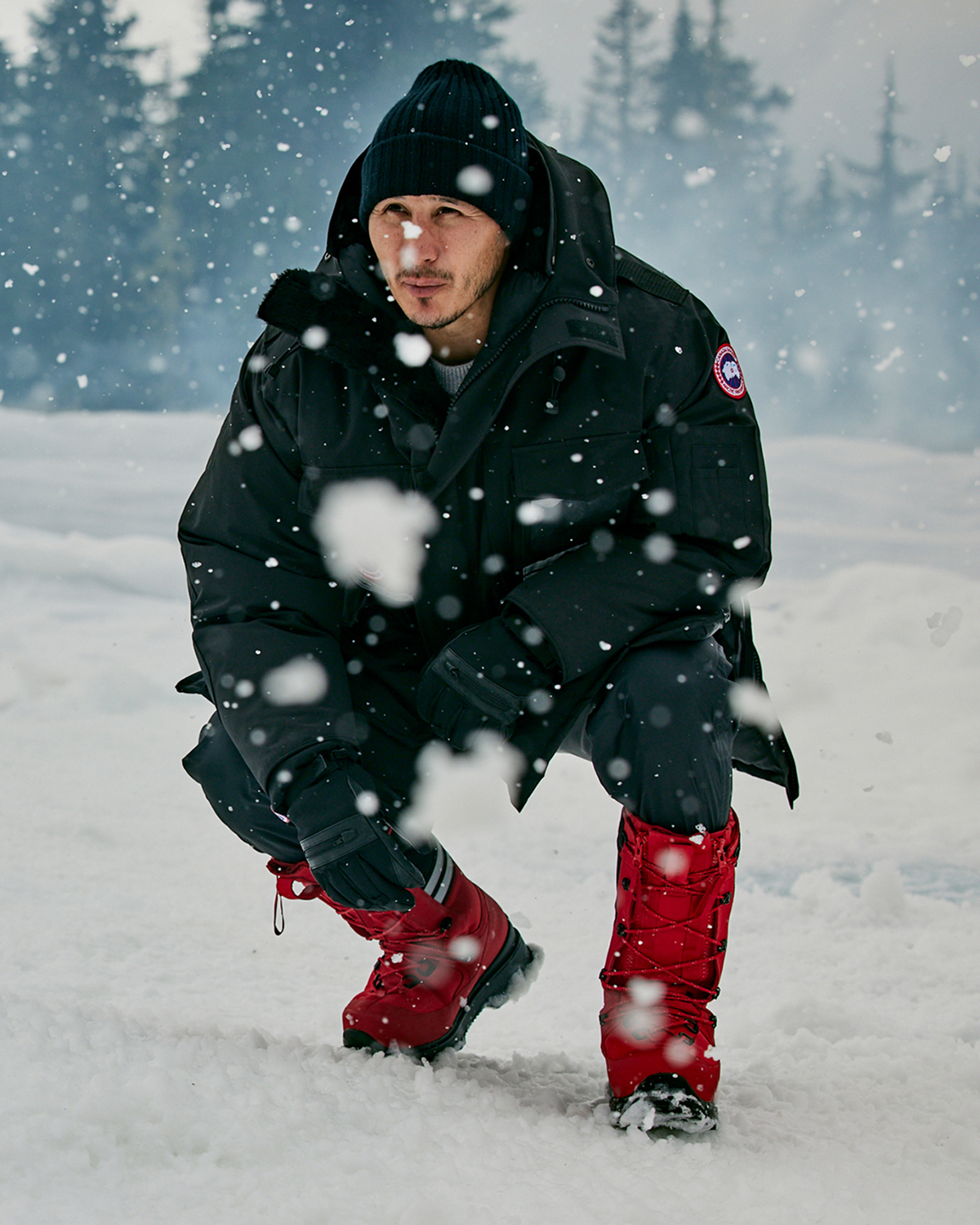
Campaign star Jordin Tootoo modelling the brand’s first ever footwear offering
Lyst’s statistics already demonstrate that there is appetite for these pieces – in December 2021, searches for Canada Goose fur-free items were up 75 per cent year-on-year and pieces made with recycled fabrics were up 73 per cent. Net-a-Porter, meanwhile, reports that the brand is now on the radar of more conscious consumers, who are purchasing these designs as ‘buy now, wear forever’ investments. Despite these pieces being more expensive to produce, Reiss is committed to making the change. “This is the future of outerwear for Canada Goose,” he says. “Part of our mission is to make the world a better place. You can’t be a company and just take from the world without improving it at the same time.”
Find out more: canadagoose.com





